

“Dan O’Brien: Guardian of the Grass”,










“Dan O’Brien: Guardian of the Grass”,







DAN

A
HEY!
COMMUNITY

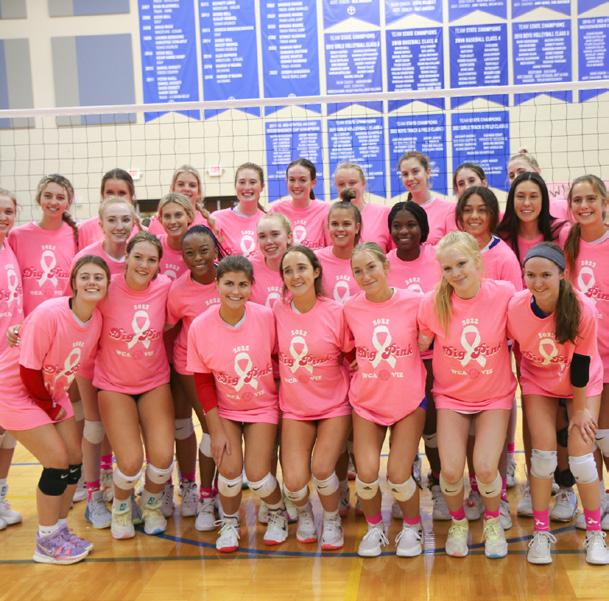
GETTING
UNIVERSITY:
WCA
ACADEMY
1000
THE
Whenever it’s time to sit down for dinner with the in-laws you don’t really agree with or a coffee date with someone new that you want to impress, people always tell you not to talk about three things: religion, money, and politics. But, what if you go to a Christian private school with a bunch of kids who have strong political opinions? Well, welcome to Westminster! This environment puts you in a real predicament for avoiding those tough conversation topics. Especially with the midterm elections right around the corner.
As the weather cools down and leaves turn, politicians push through the last stretch of their campaigns right up until November 8th: election day. Many students do not even have a general understanding of the election, much less what it means to have a meaningful conversation about them. It can be easy to just agree with your parents (or go the completely opposite direction if you’re feeling like an edgy teenager), but mindlessly spewing “facts” overheard from grandpa’s conversation at dinner or that were seen in a 15-year-old’s TikTok will not exactly do the best job of providing true knowledge on any aspect of politics.
First, it’s absolutely necessary to understand what the midterm elections even are. This time around, one of Missouri’s U.S. Senate seats and all 8 seats in the U.S. House (one for each MO district) are
Signed,
up for re-election. Most important to those who live in the St. Louis region are districts 1 (St. Louis city), 2 (St. Louis County and St. Charles County), and 3 (Franklin, Jefferson, Warren, and parts of St. Charles counties). Other offices on the ballot include Missouri auditor, the offices of the Missouri State Senate, House, and Supreme Court, and municipal governments, school boards, etc.
This may not seem quite as important or heated as some of the most recent Presidential elections. But, these elections still matter greatly, especially to the futures of both the U.S. House and Senate majorities. It’s because whichever party controls congress holds the key to pushing forth their agenda (i.e. new legislation).
Finally, even though religion, money, and politics are supposed to not mix, it’s completely necessary to do so in an environment like this. Treating others with respect no matter what they believe in regards to the election is the easiest way to portray Christian values when discussing challenging topics. Also, it’s important to be mindful of where someone else may be coming from. While many in the Westminster community have potentially had a suburban, upper-middle class upbringing, it would be completely wrong to assume that that is the case for everyone.
800 News and Anna Grace Likes, Editor-In-Chief
Contact us at 800news@wcastl.org if you have any ideas, questions, or concerns.
Imagine you are riding through a wide-open prairie in a no-door suburban with a 1 ton beast only yards away. This is what the South Dakota summer seminar experienced this past summer at Wild Idea Buffalo ranch. The ranch is located just outside of Rapid City, South Dakota, and it contains over 100,000 acres of pure, native grasslands, grazed by native North American bison. Dan O’Brien started Wild Idea Buffalo Company over 20 years ago with the intent to restore the Great Plains to what they once were, with wild prairie grasses grazed by wild American Bison.
In the 1800’s, Westward expansion and the Gold Rush began. Volumes of Americans moved out west, settling plots of land along the way. In the process, they overhunted and kicked out many bison from their homes and built towns and farms on the Great Plains.
Not only did they eradicate bison from their homeland, they also removed native grasses from the plains and planted non-native plants, such as wheat and corn. When planted, farmers would till the ground, releasing harmful carbon into the atmosphere. In turn, the soil had poorer quality because of the lack of carbon, and the atmosphere worsened because the carbon was released. As Dan told the group that visited his ranch during summer seminar, modern farming practices such as this contribute greatly to global warming.
When Dan started the project, he had fields similar to what you would see in a farm today–fields of wheat and invasive grasses that do not contribute much to a healthy ecosystem. So, at a great cost to himself, he killed all of the invasive plants and then planted native grass seeds. He has spent millions of dollars and countless hours restoring fields to native grasses. He claims that he almost considers himself a grass farmer more than a bison farmer. The bison compliment the grasses well because they are constantly on the move grazing. Unlike cows that remain in one section of land and wipe out the grass, bison never stay in one spot long enough to mow the grass all the way to the ground. According to Wild Idea’s website, (wildideabuffalo.com) a bison can roam anywhere from two to five miles per day.
Seeing the impact that Dan has made on the ecosystem encouraged and surprised many Westminster students on the trip.
They were able to see the Bison’s impact on the plains and how vital they are to restoring it.
Senior Tim Shoemaker’s favorite part was “being surrounded by Bison and [to] see how they positively impact the prairie ecosystem.” Shoemaker also learned that “Bison are a keystone species, meaning that they are crucial to the Great Plains ecosystem and preserving the prairie landscape.”
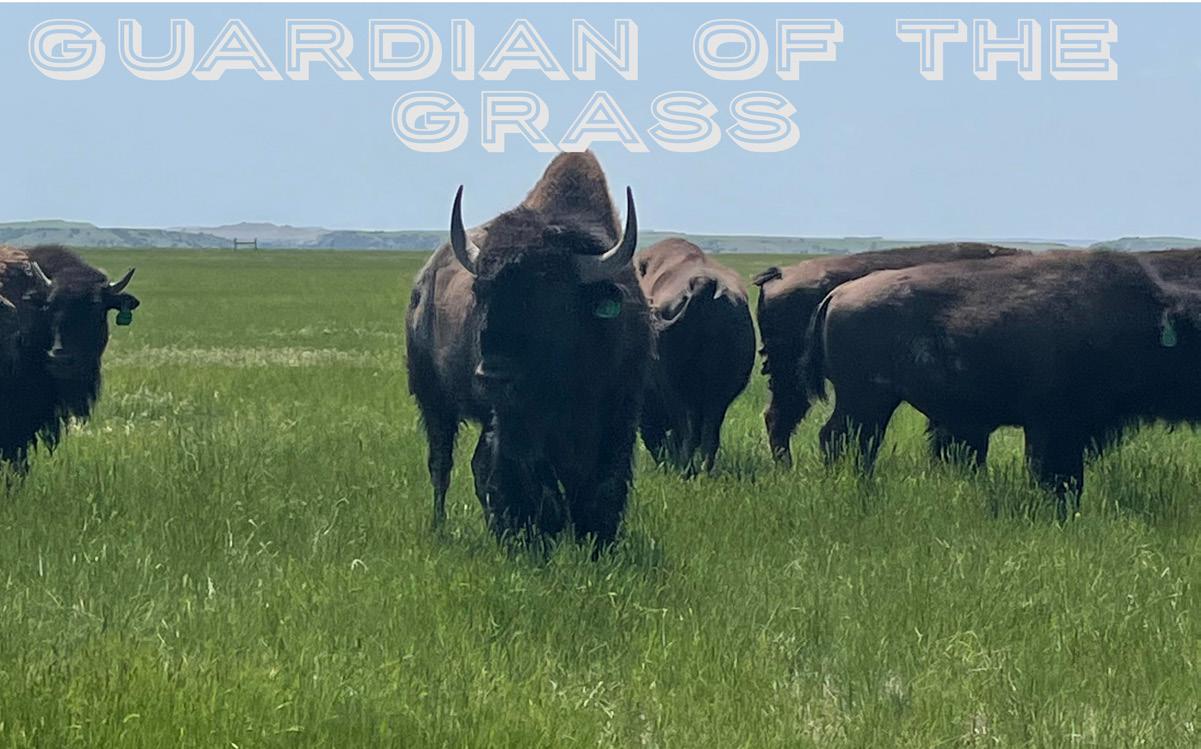
Senior Jadyn Patton enjoyed “Driving through the field of Bison and seeing how big the were” and also learned about how “Bison relate to restoration and how they improve our lives and environment today”
Dan has spent his whole life working to restore the plains to what they once were. He is restoring the prairie, reestablishing the wild Bison population, and reducing the carbon footprint all at the same time.
Ahren Muehleisen Staff Writer “ Bison are a keystone species...crucial to the Great Plains ecosystem.
- Tim Shoemaker, South Dakota Summer Seminar attendeeDan O’Brien’s 100% grass fed American Bison Image by: Ahren Muehleisen
One murdered. Two more in danger. Eight people are trapped in a guest house with a lunatic looking for revenge, and everyone has something to hide. No one is safe from suspicion.
The Mousetrap by Agatha Christie is the longest running play ever put to stage, opening in 1952 and only pausing to quarantine for COVID. It is a famous whodunit murder mystery, written under the request of Queen Mary of England.
Now, it is being brought to Westminster under the direction of Jim Butz.
As the snow falls heavily, a woman is murdered in London, and at the same time a recently wed couple has opened a new guest house.
As the snow banks grow and grow, stranger and stranger guests arrive to stay at the house. Eventually the snow grows to trap the residents of the house.
But another guest arrives, a policeman, who says that someone in the house is a murderer.
Suddenly, anyone in the house could be the killer. And no one can be trusted.
“It seems as if every scene you watch, someone else might be the murderer - you can never be sure until the end,” Elizabeth Bauer, stage manager, says.
“I love The Mousetrap,” says Mr. Butz. “The first time I saw [it]… when the murderer was revealed, I was simultaneously surprised, terrified, and strangely delighted. I was completely immersed in the play for the entire performance,” he reminisces.
The play itself has potential for greatness. But if not properly prepared, it will all go wrong.
“The success of any show is ultimately in the hands of the performers,” says Mr. Butz.
And he is determined to have these performers succeed.
“I believe in over-rehearsing a play. Some claim that a show can peak too soon. I’ve done well over a hundred shows, including around fifty professional productions and I’ve never seen evidence of an over-rehearsed production. You can never be too prepared,” said Butz.

Even after drilling the same script daily, it still holds its allure.
“Sometimes I grow tired of a show during the process. You get to know a piece so well, so thoroughly, that it can become stale and a bit boring. However, I don’t feel that way at all with this play…Agatha Christie has rendered varied and well drawn characters, each with a unique energy and voice,” said Butz.
This excitement for the rehearsal carries to the performance as well.
“I’m very much looking forward to the performances. Every show is incomplete without an audience,” he shares.
Production began August 31st and is now occurring almost daily as the extremely talented cast brings to life a spectacular performance.
On October 27th, 28th, and 29th, from 5:00pm-10:30pm, (5:00pm11:00pm for the 29th), The Mousetrap will be playing right here at Westminster.
The most successful play of all time is coming to Westminster this week.Jonah Zell as Paravacini, giggling about something mischievous and mysterious, with Chase Borage and Morgan Pett in the background. Image by: Jack Nelson
seems as if everyscene you watch, some-one else might be themurderer - you cannever be sure until the end,”
- Elizabeth Bauer, stage manager.
Westminster teachers and staff pride themselves on the high quality of education provided in our curriculum. From thirteen, students here are trained to start brainstorming for college. It is assumed that all Westminster students will attend a four-year university, maybe even graduate school, but why is that the general assumption among the student body?
College tuition has tripled since 1980, according to CNBC and New York Times. This makes it challenging for students to attend college when loans and debt are considered. Though it can be assumed that most students at Westminster live in a household where college is paid for, it is not fair to think that every situation is the same.
Community college presents more positives than it does negatives. It does not mean the traditional four-year university experience is completely cut out, and basis of community college is providing a higher level of education to undergraduate students for a better, more affordable price.
Community college is a cost-effective way to get a college education. Image by: Alyssa Greco
just over $12,000 per year.”
Community college often holds a stigma around it, especially at a prestigious school like Westminster. In reality, is there anything wrong with community college besides the fact that people view it as inadequate? Community college allows young adults to be more financially comfortable, get their grades up before attending a university if needed, and is a softer transition into adulthood.
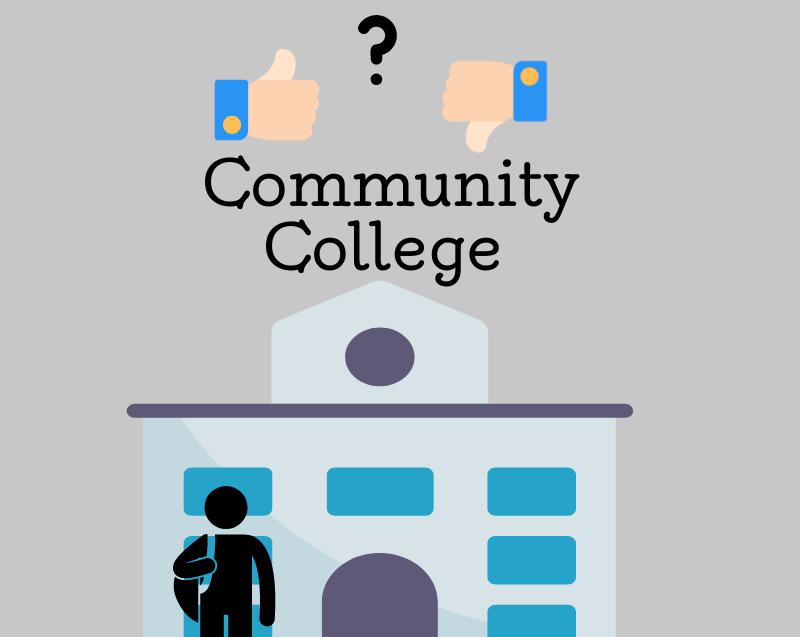
A two-year college program, like a community, can be defined as a blueprint, in my opinion. It gives a preview of what classes at a four-year college may look like and can help students decide if that is something they want to commit to. Getting to a four-year university, out of state even, and realizing it is not for you and deciding to drop out is a much more complex process than going to community college to take the time to decide. By the end of senior year, students are considered adults, but they still have a lot to figure out: and that is ok. Community college lets students know it is okay if they still need time to decide what direction they want in their future.
Andrew Warner with US News stated in May of 2022, “According to data from the College Board, community colleges cost, on average, about one-third of in-state tuition at four-year public universities. For example, Washington residents attending North Seattle College will pay a little more than $4,100 per year in tuition and fees (without financial aid). Those attending the University of Washington—Seattle, on the other hand, will pay
The problem with attending community college is not that someone is following the community college itself; it’s the reaction people give when someone says they will be attending a two-year college. They judge as soon as “community college” comes out of someone’s mouth. It’s assumed they are inadequate, fall short of success, and are “lazy.” for
““Community colleges cost,on average, about one-third of in state tuition at four year public universi-ties.”
- Andrew Warner, US News
The stigma around community college often deters private school students...but it shouldn’t.
those calling community college students lazy have not heard of the “A Plus Program,” The A plus program is a statewide organization that provides students with two years of community college paid for if they live up to certain requirements in high school. Some of these requirements for the program induce maintaining a 2.5 unweighted GPA or above, 95% attendance rate, and a minimum of 50 hours of community service for the high school. Any student that can reach these requirements receives the opportunity to attend community college for free and then continue to a university once done with all of their core classes. These requirements are attainable, but it requires hard work and dedication. Students attending community college on an A Plus scholarship are hard workers, which is clear.
Mark J. Drozdowski from Best Colleges stated that “roughly 7.7 million undergraduate students attend community college.” The popularity of attending community college is apparent, but its lousy reputation still draws attention away from the actual benefits of community college.
Drozdowski explains, “A lot of students believe they are too good for community college, or they could never attend there because their parents expect better or their peers will make fun of them. As community college leaders face enrollment problems, they need to realize that stigma is a real reason why they miss out on a lot of students.”
Community college by no means shows that the student falls
quicker, and have smaller classroom sizes.
Community college allows students to see life in the real world. Traditional universities are like a bubble. Students live on campus, go to class on campus, go to the dining hall, and rarely find themselves having to leave campus for something they need. Living in such a close-knit community is nice, but it is not realistic. In the real world, these students will find themselves going all over town for their jobs; they might live in an apartment that is a far commute, and much more. It can be overwhelming, but students of community colleges have been doing this for years; they got it.
short of the criteria of attending a traditional university; it is not something for which someone should face criticism. This has become a significant issue that some schools have entirely dropped the community from their name. The real problem is the pride and ego of others; they believe that they are above these people in some sense, but why? Undergraduates who chose community colleges have the upper hand over those at four-year universities. They save money, get their degrees
Allow this to be a lesson for the student body of Westminster. As a proclaimed Christian school, treating others with respect we would want should be expected. With this being said, a student here should never be ashamed to tell others they will be attending community college but rather applauded for this decision.

Deciding to go to community college is not easy because while there are positives, students still need to give up a lot of college experiences to be here. Attending community college shows a particular type of responsibility rare in this world. A significant proportion of community colleges is the decision itself; it takes a lot of rationalizing and evaluating the positives and negatives.
These students will look back years later and realize their decision to attend community college helped them tremendously. They won’t care about who said what about attending community college, so why bother saying anything? It is time for society to let go of their sense of entitlement and realize achieving any level of higher education is honorable, community college too.
““roughly 7.7 million undergraduate students attend community college.”
- Andrew Warner, US News
How have food shortages affected the world in the past, present, and future?
In recent years, there has been more news about the fact that some food products are becoming harder and harder to find in grocery stores and local markets. However, there have always been food shortages happening in the United States and all around the world. How have certain food products becoming more scarce affected society in the past and present, and how will this problem affect society in the years to come?
According to informea.org, the definition of a food shortage is “when food supplies within a bounded region do not provide the energy and nutrients needed by that region’s population.”
Food shortages, unfortunately, have been happening all around the world for a long time. Christian Gerlach from tandfonline.com notes that when a famine took place in the Eastern hemisphere “in the early 1970s, there was scarcity in the world grain market, soaring prices and famines in several countries of Asia and Africa.”
Not only have countries in Asia and Africa been affected by famine, the United States has been affected by famines, too. According to Mark Rice-Oxely from csmonitor. com, “food prices also spiked in the late 1980s, and again in the mid 1990s after a drought crimped US grain supplies.”
But how does this relate to what is going on around the world today? There have been even more food shortages since the ones that happened in the 20th century, especially this year.
The worldbank.org explained how between May and August of 2022, “93.3 percent of low-income countries, 90.9 percent of lower-middle-income countries, and 93 percent of upper-middle-income countries have seen inflation levels above 5 percent,” lots of these countries even going into the double-digits.
The article continues by stating that “the share of high-income countries with high inflation has also increased sharply, with about 85.7 percent experiencing
While most Westminster students have most likely not gone through a food shortage that has drastically affected their life, everyone went through the economic crisis of inflation impacted by Covid-19 and the war against Ukraine that started at the beginning of this year.
There have also been food shortages linked to sickness. Earlier this year, talk about shortages of infant formula was all over the news. Both Katie Teague from cnet.com and Amrita Thakkar from tasteofhome.com covered this specific shortage: “Abbott Nutrition was forced to temporarily shutter a Sturgis, Michigan, plant manufacturing baby formula after several infants developed serious bacterial infections,” said Teague. “The closure resulted in major baby formula shortages across the US.”
- Gary Robbins, in a review of the book The End of the World Is Just the Beginning by Peter Zeihan.
“The recent baby formula recall has created even more pressure for parents across the country,” said Thakkar. “With grocery shelves turning up empty, parents have taken to social media to ask where they can find formula.”
Teague and Thakkar also list many other food items that the US has seen a shortage of this year, including liquor due to contamination, pet food and different meats due to supply chain issues (or also the case of meat sickness in animals), and so much more.
How do these food shortages even happen? Information from edengreen.com says that “climate change, cyberattacks, labor shortages, and scarce packaging materials” are all factors as to how food shortages can start in recent years. They mention that “while any one of these
”...many of theleading countriesare facing a demo-graphic disaster. ”
“
How have food shortages been impacting people around the world?

Image by: Christina English
problems could be cause for concern, all of them together add up to the likelihood of further food shortages coming down the line.”
Gary Robbins, in a review of the book The End of the World Is Just the Beginning by Peter Zeihan on ricochet.com, also explained Zeihan’s argument about the cause behind food shortages, saying that they could be caused because of the effects of the former Bretton System in World War II, where “the United States agreed to provide free passage [by making sure ships are at sea] worldwide and [...] support ever-expanding free trade,” started to falter in recent years because of the recent COVID-19 pandemic, and because “many of the leading countries are facing a demographic disaster,” specifically naming China and Japan.
This then leads to the most important question:
how can we slow down food shortages or stop them from happening? Worldbank.org says that “as [a] part of a comprehensive, global response to the ongoing food security crisis, [they are] making up to $30 billion available over a period of 15 months in areas such as agriculture, nutrition, social protection, water and irrigation.” They’re then going to donate all of this money to different countries through loans and projects.
Edengreen.com and Thakkar also mention how people shouldn’t be “panic buying”, hoarding, when food shortages come out and instead only take what they and their families need. By giving money to countries in need and not hoarding food unnecessarily, the world can try to stop the conflict of food shortages bit by bit.
I deleted my social media for 7 days and this is what happened:
Instagram has become an outlet for many teenagers to disengage. Researchers have been trying to discover if the Instagram algorithm could affect attention span and engagement in daily routines.
Apps such as Instagam are more commonly used for only a few minutes at a time. Attention spans, or the time that a user is actively paying attention to content, have been researched to be “just about 2 seconds.” After this said time, and if the content fails in entertaining the viewer, disinterest assumes control leading to hours of mindless scrolling instead of meaningful information intake.
Certain tasks including school and reading become more difficult to focus on due to these short attention spans. According to pediatric psychologist Dr. Micheal Manos,
The positive and negative effects of social media. Image by: Raquel Herrera
In an attempt to discover what the specific highlights and challenges of less social media time are, I decided to delete my social media and go one week without it. Here are 5 positive and 5 negative consequences of living without social media that I observed.

Meaningful Conversations: With the absence of social media and the use of technology, a person is almost forced to be present 24/7. I found that there was no ability to disengage or quickly disconnect from a conversation. On the other hand, in order to fill that gap of social media, conversations had to be made and made often, especially with family.
“In the short term, [social media] could make it harder for them to concentrate in class or complete an assignment, which they think is boring.”
While scrolling through a social media feed, not much actual attention is needed. It becomes a mindless distraction, making it an easier option to resort to. Dr. Patrick Clarke, a supervising researcher at Curtin’s School of Population Health stated that “More time on social media also means less time doing other, possibly more important or more productive tasks.”
Increased Productivity: Oftentimes, people forget just how much time is being spent on their phones. I discovered just how large that period of time was when I had lost the ability to access social media. With plenty more time on my hands, I could be more productive and quickly get tasks done without any interruptions or distractions.
Time for Hobbies: With the excess amount of time I had, new hobbies could replace that large gap. On regular school days, the combination of social media and amount of homework left no room for any leisure.
“ “In the short term, [social media] could make it harder for them to concentrate in class or complete an assignment”
- Dr. Micheal Manos, Pediatric Psychologist from Cleveland Clinc, Ohio
During this week, I found myself able to take a quick breath of fresh air, go on a nice walk, and enjoy the outdoors.
Slower Pace: Life almost seemed to slow down during this experimental week. I found that headaches and stress levels all slowly lowered. I had more space to get things done, every minute spent completing a task was productive, and there was plenty of time to also have leisure.
Clear Priorities: Along with the loss of social media, there was a more narrowed down point of view of life that came as a result. Instead of filling my head with other people’s ideas or what my peers’ were up to, I was focused upon myself, what my priorities were for that specific evening, and my family.
Less Communication: One of the most obvious negative effects of less social media is decreased communication with friends. Interaction with school friends specifically was limited to school only during this week.
No Getaway: As previously discussed in the positive effects, disengagement is harder to find without social media. A quick getaway or a brief 10 minute break from an assignment is not possible. This largely depends on each person on whether or not it is a positive or negative effect.
No News: Having less knowledge on news stories and being less up to date could be considered both a negative and positive effect. Without the constant notifications or giant headlines blaring in your face and on your phone, it is easier to miss out on that knowledge of current events and breaking news.
Distraction from school can be linked back to social media engagement.
Image by: Raquel Herrera Muscle Memory: An alarming observation I found was of myself picking up my phone but setting it down immediately. I already had this habit that felt like muscle memory, to pick up my phone and want to do something with it. It happened quite often. This disengagement that I was subconsciously seeking was never found and felt almost like an itch that could not be satisfied.
Less Social Knowledge: Less knowledge of your favorite social media content creators or just your friends is also a result of ridding of those certain media platforms. Posts can easily be missed out on because of the constant and very frequent amount of posts being made to keep a person active on your account.
While connection with friends or family over long distances and staying up to date on current news can be positive, there can be a balance with day-to-day use of social media. Each extremity of social media use could be avoided if there was a restriction on its time limit. The pros greatly outweigh the cons in this scenario. Productivity, face-to-face personal conversations, and more time can benefit every person if they are willing to limit technology use.

- Dr. Patrick Clarke, supervising researcher at Curtin’s School of Population Health


As most people know, it is a huge accomplishment to be able to play a college sport and it takes years of dedication and development to get there. College athletes make endless sacrifices throughout their high school and college experiences for their sports. There are many teachers working at Westminster that were college athletes.
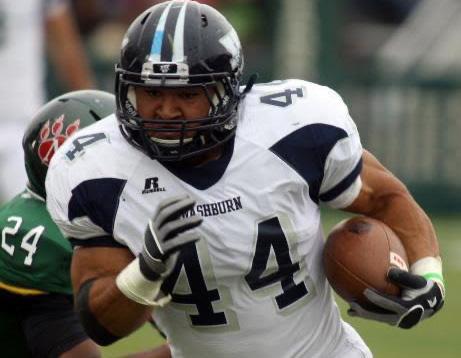
Lizzie Vogel, art teacher, played Division I volleyball at Baylor University for one year before transferring to Westminster College to play Division III Volleyball and Basketball for her last three seasons. She transferred because she wanted a little more free time and she did not want to be “owned” by the team like she felt she was when she played at Baylor. Her favorite part of being a college athlete was all of the lifelong friendships and relationships she was able to form with her teammates.
Dan Petke, Varsity baseball and softball coach, played Division II baseball at Cedarville University in Ohio for all four years of his college career. He was a catcher and also a dominant hitter. “Being a college athlete was difficult with all of the extra time commitments and early practices,” said Dan Petke, softball and baseball coach. Still, Petke enjoyed the discipline of playing a college sport as well as the relationships he made with his teammates throughout his career.
mieKuhn, varsity girls lacrosse coach played Division II lacrosse at Lindenwood University where she played primarily defense but also had to step in to play goalie a few times. She had a love/hate relationship with all of the running she had to do because it kept her in shape, but it was also really hard at the moment. Coach Kuhn loved being on the team and having a bunch of built-in friends and also loved getting to compete at a high level. In her junior and senior years, the team made it to the final four. “It was really cool to take a private plane to Virginia for the NCAA tournament.” said Jamie Kuhn varsity girls lacrosse coach.
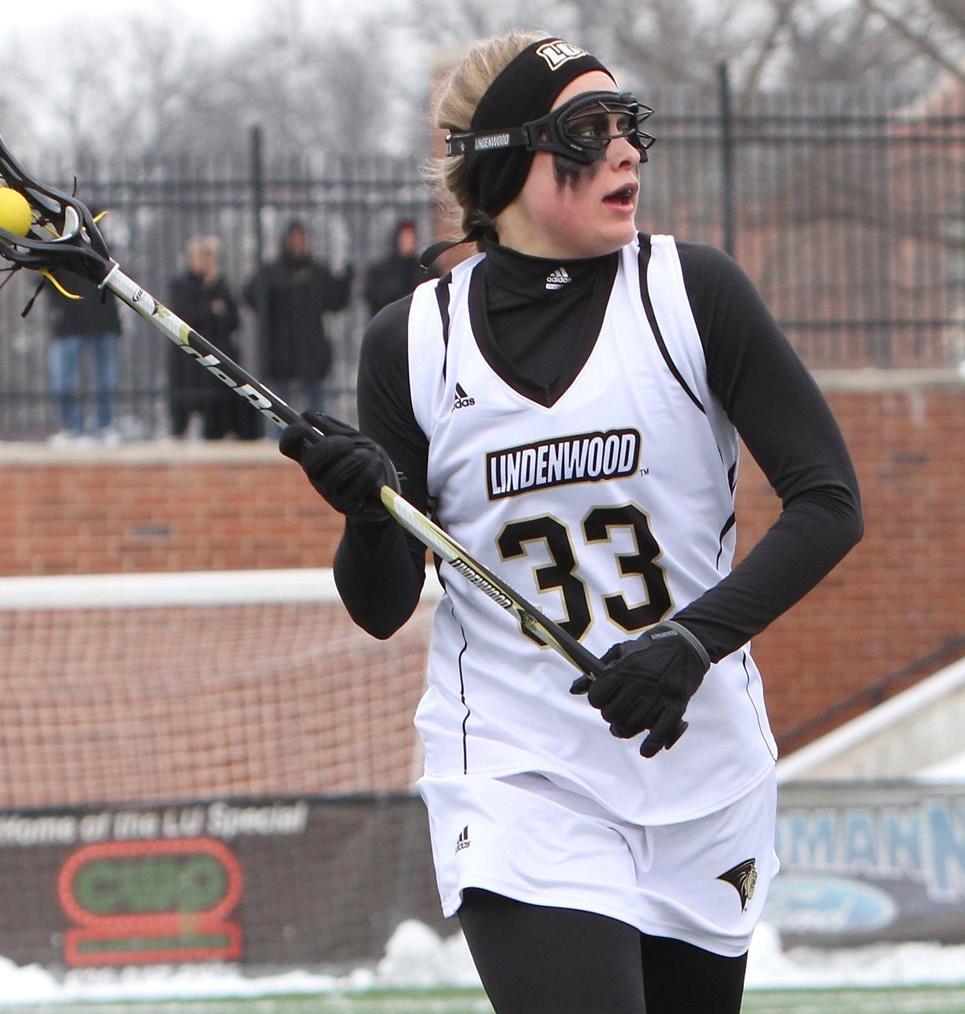
Greg Schoenberg varsity football special teams and D-line coach played Division II football at Washburn University where he was a fullback. He enjoyed being a student-athlete and all of the relationships that he gained with his coaches and teammates as well as the success the team achieved. “honestly the worst part was when it ended,” said Greg Schoenberg, varsity football special teams and D-line coach when asked about the worst part of his college career.
Butler B’ynote’, varsity football head coach and track coach played football and ran track at The Ohio State University. He was a running back in football and ran the 100m, 200m, 4x100m relay, 4x400m relay, and hurdles in track. He said the hardest part of being a student-athlete was balancing everything and having very long and hard days. “The best part is being a part of something that is bigger than yourself, and being a part of a tradition and family, Go Bucks.” Said Butler B’ynote’.
” Honestly the worst part waswhen it ended.”
- Greg Schoenberg, Varsity football special teams and D-line coach.Photo courtesy of Jamie Kuhn Photo courtesy of Greg Schoenberg
Many Westminster teachers and coaches were student athletes in college.
Playing at the highest level that you can play at is a time commitment that most don’t have time for. With school classes getting harder and harder the older you get, one thing every athlete must learn is time management. Some sports, for example soccer, will not let you do certain things because of your commitment to their club program. Playing at the Academy level is a time commitment that the majority of families and kids do not have the time for.
The rule that academy soccer puts in place is that, if you play for them, then you cannot play for your high school team. This rule has been in effect for quite some time now and could very well carry over to other sports. Many ask, what is an “academy?” Academy is the highest level of soccer that one can play at through highschool. Although academy is part of a club, academy usually stands alone because of the skill and talent that the players have at that level
For many, Club sports take priority over highschool sports because of the time commitment and the benefits it has. The main benefit that club provides is coaching. The coaches that are in the club organization are completely different from your regular highschool coach. The majority of the time, coaches at a specific school are teacher by day and a coach by night. Their primary job is not coaching. For a club organization, a coach’s primary job is to coach and only to coach. In a big organization, they will only hire you as a coach if you have collegiate level experience or even more. Most of the time for a school they just offer the job and anyone can pick it up. More than likely your coach will have some experience but nothing more than highschool level experience.
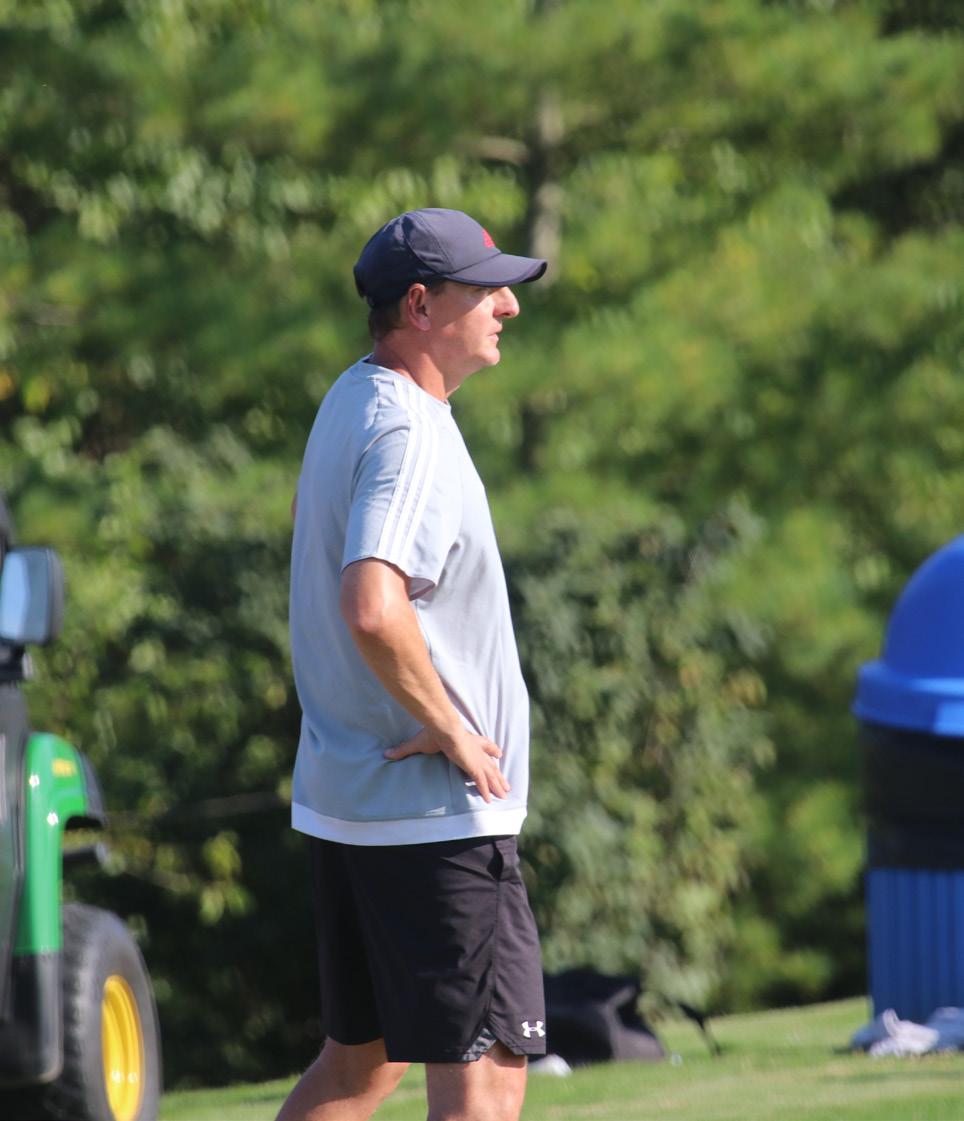
cussed what a club will give you that a generic highschool program would not. “I do think that high school soccer is very important, and it still serves a very important role in this country. But at the same time, if you want to be a professional; if you want to be a National Team player, or even just a college player, the DA is 100-times better than high school in terms of development. You get better training, better resources, better facilities, and you’re learning how to play in a professional environment.”
Image by: Joey FentressAnother benefit that would sway an athlete to play for an organization over their school is their facilities. Every club has some sort of homebase where all the training occurs. For soccer that could be a weight room, trainer, and multiple high quality fields for practice and games. Not every school has multiple fields or a nice weight room or a trainer who knows what they are doing.
In a podcast episode done by Soccer Wire in 2019, they dis-
Depending on what a player wants to do in the future, club sports could be a big contributing part to going pro. Club practices go into much more detail and provide a greater understanding of the sport. If what you want to do is to make it to the next level whether that be college or maybe professional, club sports are definitely worth the investment. For the kids that play academy soccer and do not participate on their high school team, the majority of them want to have a future in soccer.
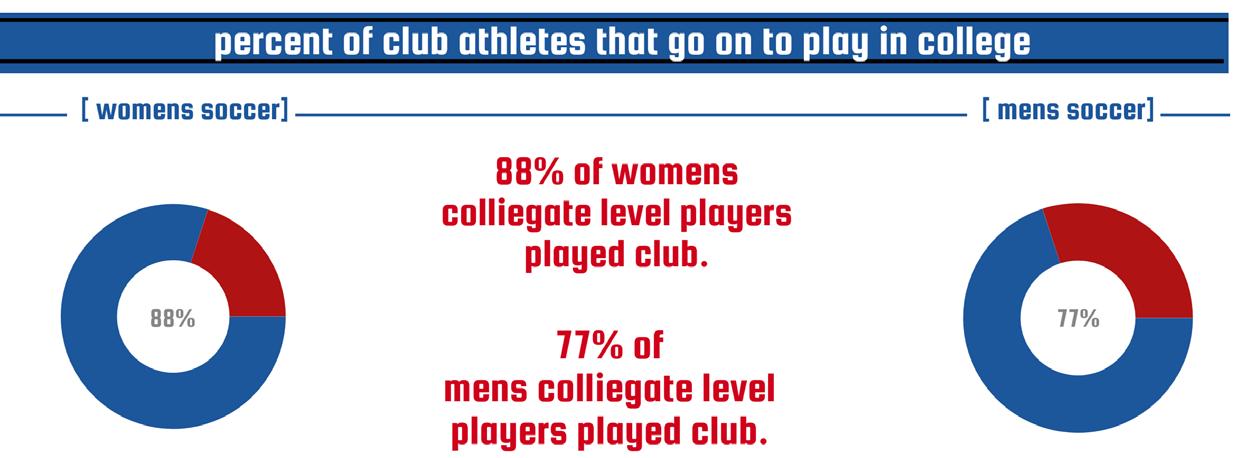
Avery Stanfill, the libero for the Westminster girls volleyball team, achieved 1,000 career digs against the Parkway West Longhorns.
Emma Fairchild Staff WriterWhile battling a tough opponent, Avery Stanfill, a Harding University commit, reached 1,000 digs. In the second set of the back and forth game against Parkway West, a team the cats will face in districts, unbeknownst to Stanfill and her teammates, she accomplished a milestone.
“Happy 1,000 digs to you! Happy 1,000 digs to you! Happy 1,000 digs dear Avery! Happy 1,000 digs to you,” is what Avery’s teammates belted out as she accomplished every libero’s dream.
The libero for the Westminster Wildcats has proven to be a key component to the team’s success since her freshman year starting on varsity. She has almost 300 digs for this season, even before postseason. She also averages around 3.5 digs per set.
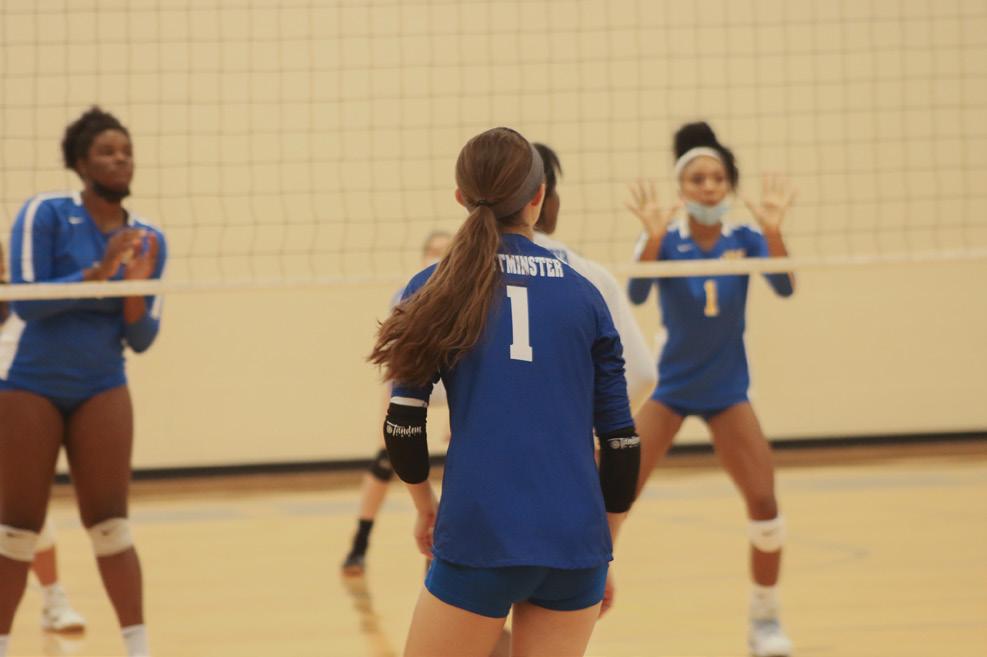
“Avery impacts the team by always being the calm in the storm, when we are stressed and playing frantic, she is always the player who is calm, collected, and ready for anything,” says Alli
Bishop, a crucial hitter for the cats.
Westminster is ranked #1 in the STL high school sports small school rankings and beating Parkway West, #2, was a big confidence boost for the Cats. Previously in the season the team fell short to Parkway West at the Borgia tournament, with them claiming a win against Westminster. Stanfill had an impressive 19 digs against West to secure the win they needed.
“I’ve been playing since 3rd grade, so it’s been a huge part of my life. I’ve spent countless hours in the gym and have loved working to get better each day. It was such a good feeling to reach 1,000 digs surrounded by my teammates,” says Stanfill after the intense game.
Sophia Shaver, one of the setters for the Cats, says, ‘Everyone can rely on Avery in the back row and have faith in her that she will get the ball.”
The Wildcats faced the Longhorns last night in a heated battle that secured the Cats the District championship victory, and Stanfill came through yet again to help her team secure the win.
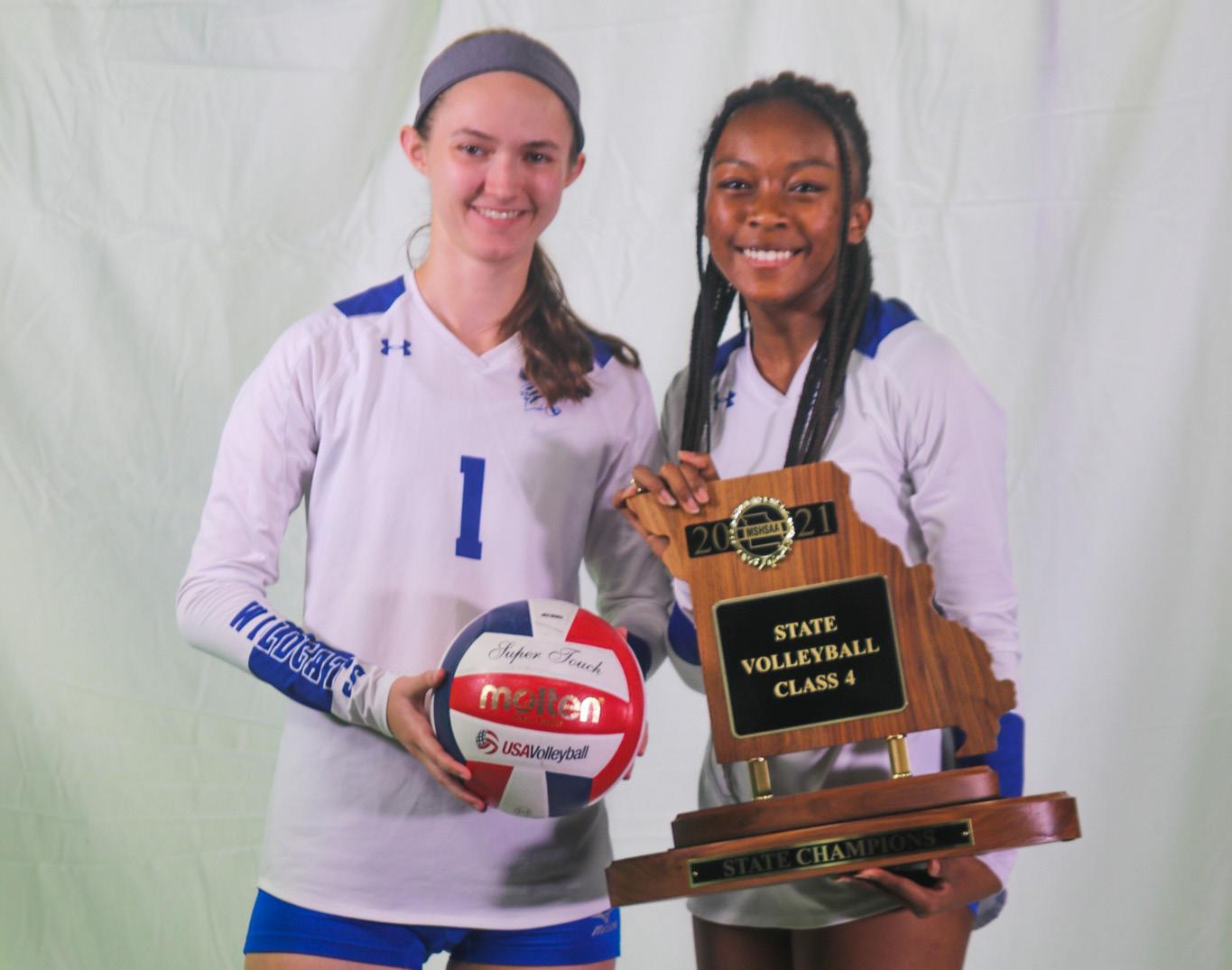
“
“Avery is one ofthe most reliable people on thecourt. She’s the perfect teammate in my eyes becauseshe always lifts me up.”
- Shelby Truitt (12), girls varsity volleyball outside hitter.Stanfill (12th), prepares to dig her opponent. Photo by Mia Schuelen Avery Stanfill (12th) and Yemi Daramola (12th) at photoshoot. Photo by Mia Schuelen
Letterman jackets were a staple of high school sports in the past. Many of our parents used to sport their jackets proudly every Friday–every athlete from the football players to the dance team had them. Unfortunately, these jackets have become less and less common, which is especially unfortunate in a town that takes uncommon pride in “where you went to high school”.
One can still see letterman jackets proudly worn when traveling to small towns for sports events. But, where are they at Westminster? There are a few around the school with a couple football players owning them, mainly wearing them on game days. But what about the rest of the athletes?

The biggest factor for the football team and their jackets was the price. “The cost is really expensive if you only have a few orders. We wanted to order more but we didn’t get enough orders from the football team,” said coach Butler B’ynote’. Just barely getting enough orders to drive the price down from around $400 to $200, the price was a big factor on why many football players do not have them. But that price will not stay that way if more people order the jackets. The more the school orders, the more the price decreases, which is a great incentive to make the jackets available to all student athletes.
Why letterman jackets though? As said before, letterman jackets are a staple of athletics. Any classic small town high school sports movie shows the whole team proudly sporting these jackets in support of their school’s football team. Gaining more support for them would bring out school spirit and give pride to WCA students again, and Coach B’ynote’ agrees that “it’s a huge morale booster for the school”.
“To me my letterman jacket is something that I earned and decorated with athletic achievements I have accomplished, and it makes me feel like I am a part of an exclusive group of varsity athletes that I can represent in uniform with my teammates and other athletes.” Roger Jinkins, Senior.
“My favorite part of a letterman jacket would be being able to represent the team through a more sleek looking piece of clothing than something like a sweatshirt.” Luke Hornburg, Sophomore.
Westminster does encourage students to play sports through the school, wanting us to be proud Westminster Wildcats. Walking into the grand entry, playing on the TVs, is a slide show containing pictures of athletes. In this slideshow it says that Westminster Christian Academy has had over one-hundred college scholarships through athletics. Westminster clearly prides itself on athletics, so students should start also.
am a part of anexclusive group ofvarsity athletes that I can represent inuniform with myteammates and other athletes,”
- Roger Jinkins, Senior.
“My favorite partwould be [...] Beingable to represent the team through a moresleek looking pieceof clothing than asweatshirt,”
- Luke Hornhurg, Sophomore.
“Westminster’s Letterman Jacket currently worn by the football team. Image by: Maddox Rosenberg
Lucy Hager and Ansley McGowan are starting freshmen on varsity, but how did they get here?
Field hockey has been a part of Hager’s life for years as she grew up playing with her older sister Huntleigh Hager, she fell in love with the game the first day she touched her stick.
“When I was younger, my mom thought that field hockey would be a fun sport for my sister and I to try because she had never really heard anything about it before.” When Hager was seven, she was handed a “crazy, colorful, Cranberry Field Hockey stick” and told to just “figure it out.”
And wow, she did. Hager was clearly more skilled than others her age and in love with the sport. Although she was set back mentally due to an unfortunate placement on a club team that did not seem to have her back as much as they claimed to, she gathered a few friends on that team and they all switched to a new club around the same time. Gateway Field Hockey Club cured Hager of her mental blocks and helped to mold her into the player she is today.
“Gateway is awesome, all the coaches are firm but loving. You can tell they care more about you than if they win tournaments. But don’t get me wrong, they still push you to your limits.”
Hager is currently flourishing in her freshman season with 6 goals and 7 assists. The returning varsity players would have never guessed that a girl this young was so fast and skilled.
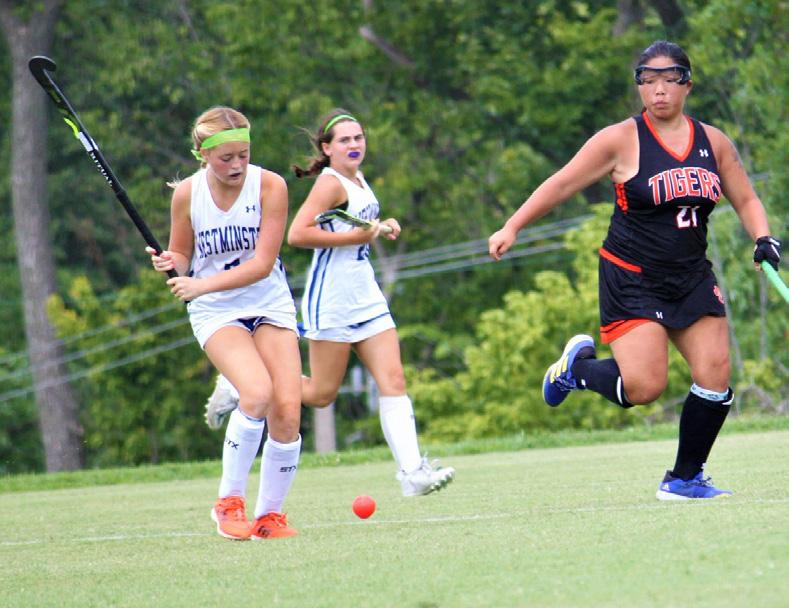
“Varsity pushes me to my max and even though sometimes it can be challenging, I am thankful to have my teammates to consistently help me back up when I fail. Even though I joined this year I feel like I have known them all forever. Our bond is special,” said Hager.
Her fellow varsity freshman teammate, Ansley McGowan, also embraces her insane skills by getting the ball down the field and right in the circle for Hager .every time. McGowan started playing field hockey when she was eight years old.
“I just kinda tried it out because my mom knew other kids who were playing and I needed to channel my energy in something new after quitting gymnastics,” said McGowan.
She picked up the game so quickly it seemed to come naturally. McGowan never fails to swipe the ball away from her opponents and make plays that are crucial in her team’s wins. McGowan has the drive to succeed.
Photo by: Annie Bendick.
“My aggression has definitely helped me perform to the standards that I’m held to but I give a lot of the credit for my skill to the club practices at Gateway because you are always surrounded by someone better than you,” said McGowan.
When she started club field hockey, she used the fact that she was not the best to push her to become the best. After coming to Westminster in seventh grade she was constantly looking forward to her high school season.

“I was pretty excited when getting placed on varsity this year. It was a bit nerve wracking to be honest because almost all of the players are older.” Age is just a number to McGowan and she proves it in every game and practice.
These two are a power duo, with them being so young they are continuing to inspire middle school girls who are younger than them and showing them that they can do it too. Hager and McGowan have known each other since kindergarten which gives them the benefit of having an off-field connection and friendship. Without this duo on the forward line the field hockey Cats would not be having this great of a start to their season.
Senior defensive starter Amelia Bendick has grown deep relationships with both players, she says “I don’t know what we would do without them, and I don’t know what I’m going to do without them next year when I’m playing in college.”
With the Cats record at 12-4-1, they will continue to succeed in the playoffs with Hager and McGowan’s ambition to come out on top every time.
“Even though I joined this year I feel like I have known them all forever. Our bond is special,”
- Lucy Hager, 9th
“I don’t know what we would do without them, and I don’t know what I’m going to do without them next year when I’m playing in college.”
- Amelia Bendick, 12thLucy Hager, Varsity Fresman, hitting the ball down the field against Edwardsville. Photo by: Annie Bendick.
